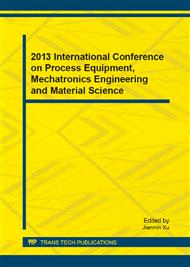p.403
p.407
p.411
p.416
p.421
p.427
p.431
p.435
p.439
Study on the Solidified Microstructures of AZ61 Magnesium Alloys under Electromagnetic Fields
Abstract:
The solidified microstructures of AZ61 magnesium alloy under different electromagnetic fields were investigated. Optical microstructure revealed that the solidified microstructure of AZ61 under single static magnetic field and combination of static magnetic field and alternating current (AC) consisted of basically equiaxed grains; when the alloy solidified under static magnetic field and direct current (DC), dendrite in solidified microstructure increases with certain orientation. The constituent phase at grain boundary consists of mainly magnesium matrix and continuous cellular compound under the static field, and the one consists of mainly magnesium matrix, cellular and spotted Mg-Al-Zn intermetallic compound under the action of static magnetic field and combination of static magnetic field and alternating current, the continuous cellular structure disappears thoroughly under static magnetic field and DC, compound in magnesium matrix distributes in discontinuous lamellar state.
Info:
Periodical:
Pages:
421-426
Citation:
Online since:
July 2013
Authors:
Price:
Сopyright:
© 2013 Trans Tech Publications Ltd. All Rights Reserved
Share:
Citation:


